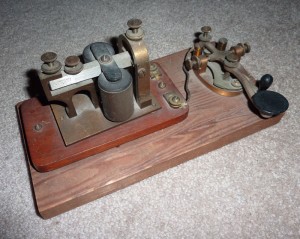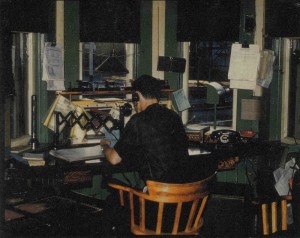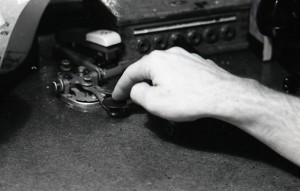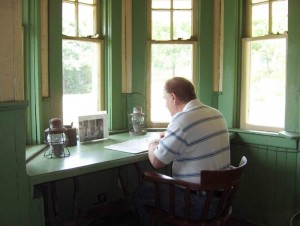The Morse Telegraph Club
 Click on each image for a closer look!
Click on each image for a closer look!
One of our ambitions in Roundhouse Park is to establish a telegraph system between the telegrapher’s position in Don Station and another part of the museum. There are local telegraph enthusiasts and collectors who love to demonstrate this ground-breaking (in the 1800’s) means of communication.
The Morse Telegraph Club – Maple Leaf Chapter
Some of these folks have organized themselves as the Morse Telegraph Club (MTC) to help preserve the equipment and these traditions.
Doug Hately of Bowmanville, Ontario heads Membership and Publicity for the Maple Leaf Chapter of the MTC and offers the following information about the MTC:
“The MTC seeks to preserve the practice and history of Morse Telegraphy. Most members are retired railroaders using American Morse. Some are ham operators who are used to International Morse Code. Some are not operators but are interested in the history and lore connected to Morse telegraphy. Membership is $18.00 per year and includes the quarterly newsletter “Dots and Dashes” which contains many interesting stories of railway and telegraph history.
Operators all over Canada and the USA are able to use the Allstream Morse Hub using a toll-free number and an old Radio Shack modem with a key and sounder to send and receive just as it was done for over 120 years of railway and commercial Morse telegraphy.
Recently, a program has been written by Les Kerr in the USA for use on the internet. It is the Morse KOB Tutorial. The program allows anyone with a PC computer and Windows 98 or later to send and receive Morse code. The sound of the telegraph is simulated in a very realistic way. The program prints out the messages on your computer at the same time you hear it. Several ‘wires’ are available to listen to and some offer a slow speed which makes it easy to learn the art of Morse code reading and sending. Click here for more on the Morse KOB.”
Click here for more about the Morse Telegraph Club and click here for information about the local Maple Leaf Chapter in southern Ontario.
Telegraphy and the Toronto Railway Heritage Centre
Pictured above is a sounder and a straight telegraph key donated by Dave Best of Kingston, Ontario to the TRHC artefact collection. Telegraph keys were used to produce the “dots” and “dashes” used in Morse Code to send the characters in a message to others on the network. The Sounder turned the electrical signals into an audible sound to allow the telegraph operator to hear the dots and dashes and write down the message.
In the picture at the left below, we find John Mellow who today is leading the initiative to interpret Don Station. The image shows John operating the station in its original location at the Don River and Queen Street in his younger days! Note the row of sounders on the shelf above the desk. In the middle picture, we see John’s arm operating a telegraph key back in those days. In the final picture at the right below, we find John Mellow recreating the original image of himself as he staffs the Don Station’s office during the Doors Open weekend event in 2007.
For more information about the history of telegraphy, visit this Wikipedia entry.
If you are curious as to how the invention of the Telegraph resulted in a revolution which some call the Victorian Internet, click here for our earlier TRHA News item on this topic.
Posting by Russ Milland; Images from the TRHA collection and John Mellow




